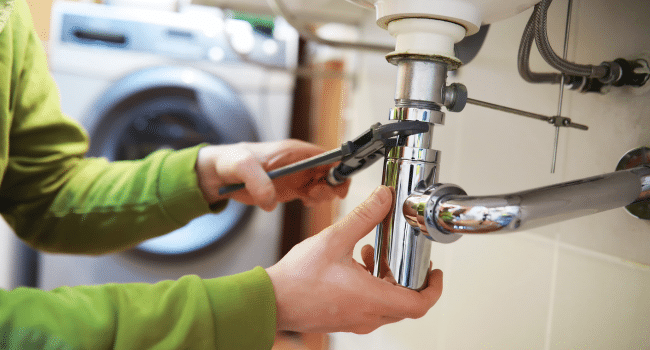Table of Contents
Persistent plumbing problems can be frustrating, especially when they keep returning after temporary fixes. From slow drains to fluctuating water pressure, unresolved issues can indicate hidden blockages, leaks, or structural pipe damage. Diagnosing the root cause is essential to preventing costly repairs and maintaining the overall health of your plumbing system. Follow this step-by-step approach to identify and resolve the underlying issues.
Step 1: Identify the Symptoms
Start by noting the specific symptoms of your plumbing problem, as this can provide clues about the potential causes.
Common symptoms to look for:
- Slow or clogged drains: Water pooling in sinks, showers, or tubs may indicate blockages.
- Low water pressure: Can result from pipe leaks, mineral buildup, or faulty fixtures.
- Frequent backups: Persistent water backups in multiple drains suggest a more serious problem, often related to the main sewer line.
- Unusual noises: Gurgling or hissing sounds may point to air trapped in the pipes or blockages.
- Odors: Foul smells could indicate sewer gas escaping through cracks or dry P-traps.
Document when and where these symptoms occur, as this will help you narrow down the source during the diagnosis.
Step 2: Perform a Visual Inspection
Inspect the visible parts of your plumbing system for obvious signs of damage or leaks.
Areas to check:
- Under sinks and around fixtures: Look for dripping water, corrosion, or damp spots.
- Exposed pipes in the basement or crawl spaces: Check for cracks, rust, or water pooling.
- Walls and ceilings: Water stains, bubbling paint, or mold growth could indicate hidden leaks.
If you don’t find any visible damage but the problem persists, the issue may be hidden within the walls, underground, or in inaccessible areas.
Step 3: Test for Common Causes
Use simple tests to rule out common causes of plumbing problems before moving to more advanced methods.
- Plunger test: For slow drains, use a plunger to see if the blockage can be dislodged.
- Vinegar and baking soda flush: This natural solution can help clear minor clogs in sinks or showers.
- Water meter test: Turn off all water fixtures, then check your water meter. If it’s still running, you may have a hidden leak.
If these initial tests don’t resolve the issue, move to the next step for a more thorough investigation.
Step 4: Check for System-Wide Issues
If the problem is affecting multiple fixtures (e.g., slow drainage throughout the house or widespread low water pressure), you may be dealing with a blockage in the main sewer line or an issue with the home’s water supply.
Potential causes include:
- Tree roots invading underground pipes
- Blockages from debris, grease, or non-flushable items
- Damaged or misaligned pipes restricting water flow
At this stage, it’s often necessary to involve professionals to get a more accurate diagnosis. CCTV drain inspections Auckland are particularly useful for identifying hidden blockages and damage within the pipes. This method uses a small camera to provide a live view of the interior of your drainage system, making it easier to locate and address the root cause of the problem without unnecessary digging.
Step 5: Address the Root Cause
Once you’ve identified the source of the issue, you can take appropriate action to fix it.
Common fixes include:
- Clearing blockages: Use professional drain cleaning methods like hydro-jetting or snaking to remove stubborn debris.
- Repairing leaks: Seal small leaks using epoxy or pipe tape, but larger leaks may require pipe replacement.
- Replacing damaged pipes: If pipes are corroded or severely cracked, replace them to prevent further damage.
- Trimming tree roots: If roots have invaded the pipes, you may need a combination of root cutting and pipe repairs.
Step 6: Prevent Future Problems
After addressing the immediate issue, take steps to prevent future plumbing problems.
Maintenance tips:
- Regularly clean drains: Flush them with hot water and a natural cleaning solution once a month.
- Install drain strainers: Catch hair, food, and debris before they enter the pipes.
- Avoid flushing non-flushable items: Only flush toilet paper, and dispose of wipes and sanitary products in the trash.
- Schedule professional inspections: Regular check-ups using tools like CCTV inspections can help catch problems early.
By following these steps, you can ensure that persistent plumbing problems are diagnosed and resolved effectively, helping you avoid major disruptions and expensive repairs down the road.
